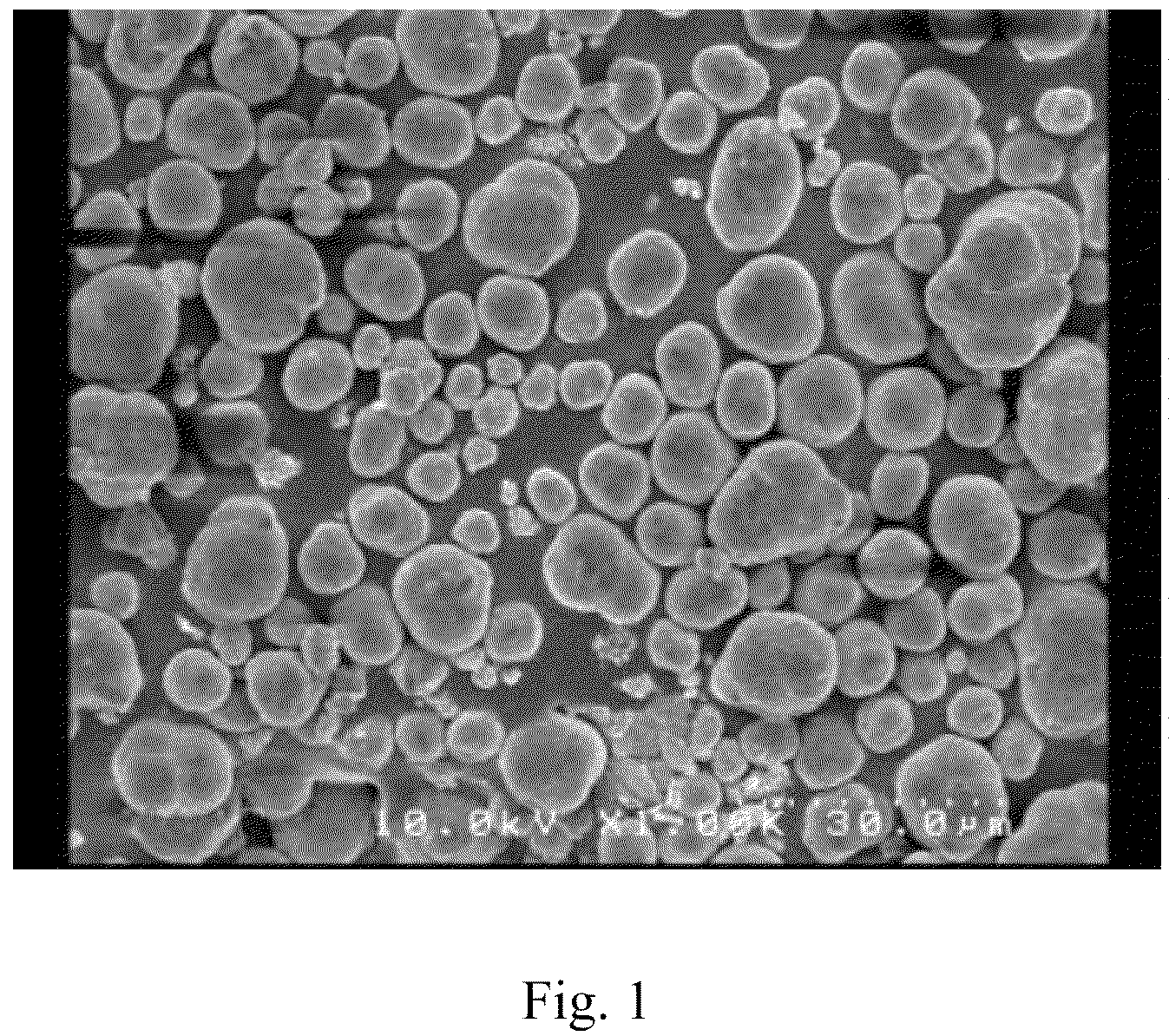Composite carbonate and method for producing the same
a composite carbonate and carbonate technology, applied in the field of composite carbonate, can solve the problem that the filling density of the positive electrode active material in the electrode is low, and the lithium composite oxide produced by using the composite carbonate gives the effect of enhancing the effect, reducing the amount of waste solution left, and increasing the specific surface area and tap density of the composite carbona
- Summary
- Abstract
- Description
- Claims
- Application Information
AI Technical Summary
Benefits of technology
Problems solved by technology
Method used
Image
Examples
example 1
[0055]
[0056]In purified water, 12.3 g (0.052 mol) of nickel chloride hexahydrate, 10.3 g (0.052 mol) of manganese chloride tetrahydrate and 12.3 g (0.052 mol) of cobalt chloride hexahydrate were dissolved, and then the solution thus obtained was further diluted with purified water to 58 ml to prepare the solution A.
[0057]In purified water, 68 g (0.81 mol) of sodium hydrogen carbonate was dissolved, and the solution thus obtained was further diluted with purified water to 850 ml to prepare the solution B.
[0058]
[0059]In purified water, 0.42 g (0.0072 mol) of sodium chloride and 0.89 g (0.011 mol) of sodium hydrogen carbonate were dissolved, and the solution thus obtained was further diluted with purified water to 20 ml to prepare the solution C.
[0060]The compositions of these solutions were as follows.
[0061]Solution A: Ni: 0.90 mol / L, Mn: 0.90 mol / L, Co: 0.90 mol / L, Cl: 5.38 mol / L
[0062]Solution B: CO3: 0.95 mol / L, Na: 0.95 mol / L
[0063]Solution C: CO3: 0.53 mol / L, Cl: 0.36 mol / L, Na: 0....
example 2
[0066]The same solutions A, B and C as in Example 1 were prepared. Then, the total amount of the solution C was placed in a reaction vessel, the solution temperature was maintained at 80° C., and the total amount of the solution A and the total amount of the solution B were simultaneously added dropwise at a constant rate to the solution C under stirring at 2400 rpm over a period of 3.5 hours.
[0067]After the completion of the dropwise addition, solid-liquid separation was conducted in the usual manner, and the collected product was dried at 50° C. for 12 hours and lightly pulverized to yield 18.0 g of a powder product (yield: 98%). The thus obtained powder product was subjected to an XRD measurement and an ICP measurement to reveal that the powder product was a composite carbonate that contained nickel, manganese and cobalt in a molar ratio of 1.00:1.02:1.00.
examples 3 and 4
[0093]The composite carbonates obtained in Examples 1 and 2 and lithium carbonate (average particle size: 4.5 μm) were weighed out in such a way that the ratio (Li / M) of the number of moles of the lithium atoms in lithium carbonate to the total number of moles (M) of the nickel atoms, manganese atoms and cobalt atoms in each of the composite carbonates was 1.03, and each of the composite carbonates was mixed with lithium carbonate sufficiently with a mixer; thus homogeneous mixtures were obtained.
[0094]Next, each of the thus obtained mixtures was baked at 800° C. for 10 hours in the atmosphere, then cooled, thereafter pulverized and classified to yield a lithium nickel manganese cobalt composite oxide. The physical properties of each of the thus obtained lithium nickel manganese cobalt composite oxides were measured in the same manner as described above, and the results thus obtained are shown in Table 2.
PUM
 Login to View More
Login to View More Abstract
Description
Claims
Application Information
 Login to View More
Login to View More - R&D
- Intellectual Property
- Life Sciences
- Materials
- Tech Scout
- Unparalleled Data Quality
- Higher Quality Content
- 60% Fewer Hallucinations
Browse by: Latest US Patents, China's latest patents, Technical Efficacy Thesaurus, Application Domain, Technology Topic, Popular Technical Reports.
© 2025 PatSnap. All rights reserved.Legal|Privacy policy|Modern Slavery Act Transparency Statement|Sitemap|About US| Contact US: help@patsnap.com

